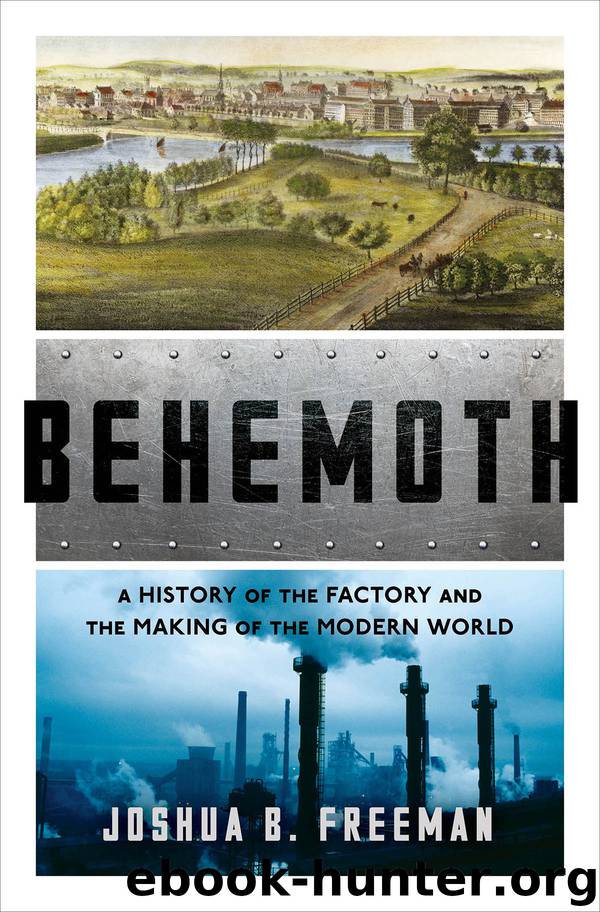Behemoth by Joshua B. Freeman

Author:Joshua B. Freeman
Language: eng
Format: epub
Publisher: W. W. Norton & Company
Published: 2018-03-05T05:00:00+00:00
Did It Work?
Did the giant factory succeed in the Soviet Union? The question carries a different meaning and weight than if asked about earlier incarnations of industrial giantism. Elsewhere, big factories had been built by individuals or corporations for a narrow purpose, their own economic reward. Sometimes they also had philanthropic or social goals, but those were almost always secondary and often instrumental to the economic success of the factory and its payoff to its creators and investors. By contrast, in the Soviet Union, giant factories were seen as a means to very large social and political ends: industrialization, modernization, national defense, and the creation of socialism. While earlier big factories were conceived of as a way to expand production, in the Soviet Union they were seen as a way to transform society, culture, and, ultimately, world history.
By the measure of aggregate output and economic growth, the Soviet industrialization drive of the 1930s succeeded. The infrastructure and industrialization efforts under the Five-Year Plans accelerated the growth of industry and the overall national economy to rates that surpassed those in the West, where the Depression left the leading industrial countries in stagnation. In sector after sector, Soviet industrial output zoomed up, in many cases with industrial giants playing a critical role.
Economists have debated if the same kind of growth could have been achieved through a more balanced program of development, less focused on concentrated investment in landmark gigants. As the Soviets discovered, there were diseconomies of scale in creating islands of industrial giantism in a vast, undeveloped nation. Expensive, advanced equipment went unused, unmaintained, or prematurely worn down through overuse. Skilled labor shortages proved endemic and supply chains immensely difficult to create and sustain, given the thinness of the national industrial base and the difficulties of coordination through centralized planning structures rather than markets. Unable to depend on reliable flows of quality material through official channels, industrial managers built their own off-the-books networks of suppliers, using barter, favors, and other methods, creating shortages and difficulties elsewhere, while they themselves often passed defective goods up the chain.75
But the success of the giant factory cannot be fully judged using only economic measures. The scale of the great Soviet industrial projects, more than the scale of projects in the capitalist world, served an important ideological function. Giantism contributed to the massive social mobilization required for the industrialization drive, which became the moral equivalent of revolution and civil war. The world-historic scale of Soviet factories and infrastructure contributed to a cultural revolution in which modernity and progress were linked to Soviet power and mechanization. And it worked, as millions of Soviet citizens made heroic efforts to construct new facilities, a new economy, a new society.
At a price. The industrialization drive was linked, by design, to squeezing as much as possible out of the peasantry, even to the point, at times, of famine. The brutal collectivization of agriculture pushed millions of peasants away from their homes to industrial employment. Conditions during the First Five-Year Plan were worst in the countryside, but real wages and living standards for workers fell, too.
Download
This site does not store any files on its server. We only index and link to content provided by other sites. Please contact the content providers to delete copyright contents if any and email us, we'll remove relevant links or contents immediately.
Life 3.0: Being Human in the Age of Artificial Intelligence by Tegmark Max(5446)
The Sports Rules Book by Human Kinetics(4268)
The Age of Surveillance Capitalism by Shoshana Zuboff(4191)
ACT Math For Dummies by Zegarelli Mark(3971)
Unlabel: Selling You Without Selling Out by Marc Ecko(3573)
Blood, Sweat, and Pixels by Jason Schreier(3550)
Hidden Persuasion: 33 psychological influence techniques in advertising by Marc Andrews & Matthijs van Leeuwen & Rick van Baaren(3453)
The Pixar Touch by David A. Price(3343)
Urban Outlaw by Magnus Walker(3321)
Bad Pharma by Ben Goldacre(3281)
Project Animal Farm: An Accidental Journey into the Secret World of Farming and the Truth About Our Food by Sonia Faruqi(3163)
Kitchen confidential by Anthony Bourdain(2989)
Brotopia by Emily Chang(2989)
Slugfest by Reed Tucker(2921)
The Content Trap by Bharat Anand(2850)
The Airbnb Story by Leigh Gallagher(2784)
Coffee for One by KJ Fallon(2542)
Smuggler's Cove: Exotic Cocktails, Rum, and the Cult of Tiki by Martin Cate & Rebecca Cate(2450)
Beer is proof God loves us by Charles W. Bamforth(2356)
